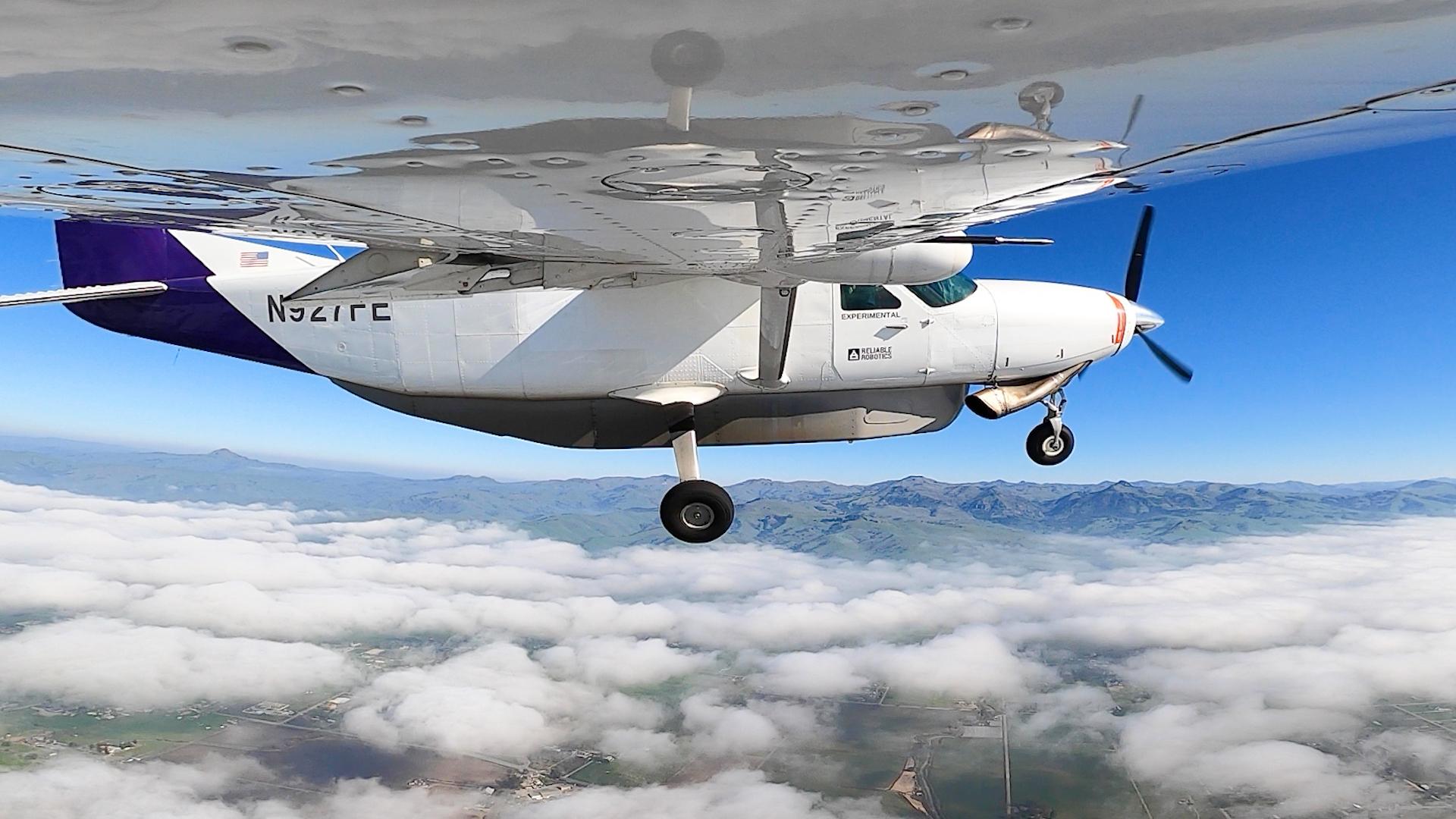
Reliable Robotics wants to automate piloting of the Cessna 208 Caravan cargo aircraft.
Aircraft automation startup Reliable Robotics and NASA have completed a series of flight tests examining the use of FAA primary surveillance radar for detect-and-avoid capabilities.
During the test campaign, Reliable Robotics coordinated encounters of two of its aircraft in California while data was being collected by FAA ground-based radars and a commercial air-to-air radar, the company said on April 25. The flights are intended to help NASA analyze the accuracy of primary surveillance radars for use in developing detect-and-avoid systems.
The FAA granted NASA limited access to its primary surveillance radar for the test flights. Reliable Robotics sees the tests as validating using existing radar infrastructure for detect-and-avoid systems.
The Mountain View, California, startup is working to develop autonomous piloting technology for the Cessna 208 Caravan. Initially, the company wants to automate cargo operations of the small aircraft.
Detect-and-avoid capabilities are seen as critical for safely coordinating large numbers of autonomous aircraft in the National Airspace System.
“These landmark flights will help the entire [advanced air mobility] industry further their understanding and future use of [primary surveillance radar] data to enhance aviation safety,” says Brad Snelling, partner chief engineer for the Advanced Air Mobility National Campaign at NASA.
Reliable Robotics is pitching the idea of a detect-and-avoid system based on the FAA’s medium and long-range primary surveillance radar network as useful for avoiding in-air collisions and an important addition to Automatic Dependent-Surveillance Broadcast technology, which it notes is not installed on all aircraft.
